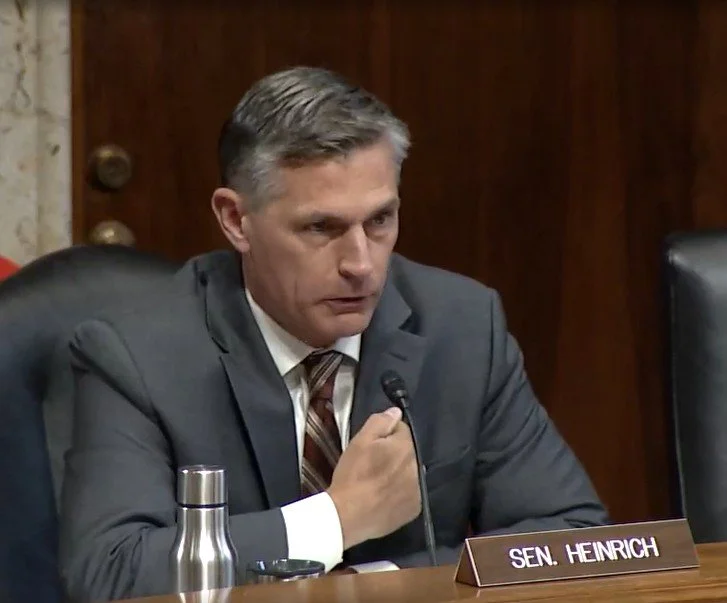This edition of The Column is dedicated to current federal-level concerns. Though the ongoing Reduction in Force (RIFs) layoffs and funding cancellations have not yet directly impacted our work at GPL, the ripple effects will be far reaching and, if these actions continue to progress, could undermine the work of historic preservation offices and nonprofits nationwide. This administration has demonstrated a lack of respect for the preservation regulations and processes that protect historic places, has withheld funding for staff and grants that support preservation efforts, and has signaled that a narrow, whitewashed version of history is the only perspective that will be supported by the federal government. We find these actions unacceptable and will continue to advance our mission of protecting historic places and telling the full history of our country.
Historic Preservation Fund: GPL joined national, state, and local historic preservation-minded organizations across the country by signing on to a letter in support of bipartisan provisions seeking reauthorization of the Historic Preservation Fund. Addressed to the Chairman and Ranking Member of the House Committee on Natural Resources, the letter says that the fund, “represents nearly half a century of federal, state, Tribal, and private sector collaboration,” and that almost every community in the US has benefitted from investments such as historic tax credits and the Save America’s Treasures program. The letter requests an increase in funding to continue to protect the places that tell American stories. Earlier this year, when the Trump administration withheld appropriated HPF dollars, Maine almost lost three of its five staff members at the Maine Historic Preservation Commission which would have severely hindered projects, approvals, and funding for preservation work. We must ensure dedicated support for the fund during this era of widespread cuts.
East Wing of the White House: President Trump committed to constructing a ballroom addition to the White House and work has now begun. In July Trump said that the addition, “won’t interfere with the current building. It’ll be near it but not touching it and pays total respect to the existing building, which I’m the biggest fan of.” Last week, bulldozers began demolishing the building, known as the East Wing, without the required process for review and approvals. The entire wing, including historic trees, were razed.
Federal Staffing and Regulations: With the ongoing government shutdown causing staffing issues, National Parks across the country are facing rising challenges to keep parks open and accessible while safe, clean, and protected. Without enough staff to monitor, visitors are starting fires when prohibited, climbing on dangerous rock outcroppings, walking through delicate habitats, leaving trash behind that attracts wildlife, and other activities that could lead to injury or cause serious damage to our parks. And yet, on top of previous staffing cuts made by DOGE, the Trump administration has indicated that more staffing cuts are coming. Across 89 units of the Interior Department, over 2,000 workers are expected to be fired, including 272 at the National Park Service who serve the Southeast, Northeast, and Pacific West regions. A statement from the Sierra Club suggests that these cuts are intentional “sabotage” of federal agencies that safeguard natural resources from corporate polluters and exploitation.
Much of the work of historic preservation falls within the Interior Department’s purview, including the Tribal Historic Preservation Program and the Bureau of Indian Affairs Environmental and Cultural Resources, Bureau of Land Management Cultural Heritage, National Park Service Technical Preservation Services and Archaeology Program, the Interior Museum and Library Programs, and many more. At this time, it is unclear how current or future staffing cuts will impact these offices and their work, though many professionals have expressed alarm. It is generally understood that with federal offices understaffed, responsibilities fall to state offices that are often already under-funded.
There is also concern about the regulatory processes that protect historic resources. On Wednesday, October 29th, a hearing (recording and testimony available) was held by the Senate Committee on Energy and Natural Resources to examine the Section 106 Consultation Process under the National Historic Preservation Act. “Section 106” refers to Section 106 of the National Historic Preservation Act that requires federal agencies to consider the effects on historic properties of projects that they carry out, assist, fund, permit, license, or approve through a review process. This gives interested parties, preservation professionals, and the public the opportunity to weigh in before final decisions are made and can help protect sites of historical or cultural significance. In Maine, which has some of the oldest building stock in the country and many important archaeological sites, the Section 106 process often results in identifying and protecting resources that would not otherwise be identified due to limited staff and funding for comprehensive surveys. GPL and Maine Preservation staff met virtually with Senator King’s office in preparation for the hearing since King serves on this committee. We shared stats and context of how Section 106 works in Maine. Unfortunately, King was not able to attend the hearing.
During the hearing, Several Senate Republicans characterized the 106 process as “blocking our future” and unnecessary red tape that prohibits necessary energy infrastructure. Thankfully, there were several voices of support for the purpose and outcomes of Section 106 including Ranking Member Senator Heinrich, Senator Cortez Masto (who confirmed that none of the three panelists believed 106 should be eliminated), Dr. Chris Merritt – the State Historic Preservation Officer of Utah, and Mr. Steven Concho – The Tribal Historic Preservation Officer at Pueblo of Acoma Historic Preservation Office. It was made clear by all that the process would benefit from streamlining, proactive coordination and preparation, and financial investments in staff and state programs. We are hopeful that this hearing opens the door for productive conversations about how to improve the process rather than eliminating or underfunding its offices.





